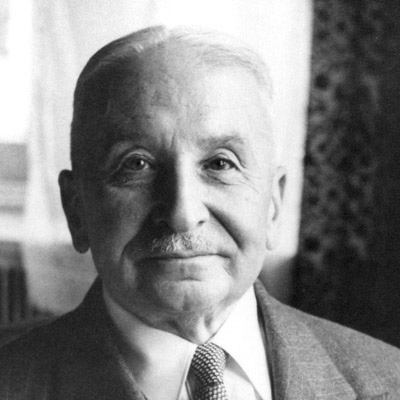This post has already been read 8098 times!
Why you need to refocus your supply chain on the real boss of your business
If you look at the top performing companies, one thing stands out, their undying commitment to providing excellent customer service. They pour vast resources into research and innovation that creates and delivers better products faster and cheaper. While most companies don’t have the resources to follow suit, they can tackle the problem another way, by uniting around the real “boss” of business…
I was reminded of the centrality of the customer this week while reviewing a press release on a disruptor in the smartphone service space, and reading news reports on Amazon’s latest activities, including its venture into ocean freight and its new patent on a highway control system for self-driving vehicles.
From Prime, the Echo, the Dash button, drones, jets, shipping and beyond, Amazon’s innovations and efforts serve one crucial purpose… to better serve the end customer. Not only do they create desirable new products, they constantly simplify and speed the ordering and delivery processes.
It’s not that the customer is important. It’s that the customer is everything. The Austrian economist Ludwig von Mises said it best…

The real bosses are the consumers. … They determine what should be produced and in what quantity and quality. Their attitudes result either in profit or in loss for the enterpriser. They make poor men rich and rich men poor. They are no easy bosses. They are full of whims and fancies, changeable and unpredictable. … As soon as something is offered to them that they like better or is cheaper, they desert their old purveyors.
– Ludwig von Mises
Although “customer-driven” and “customer-centric” are buzzwords today, savvy economists and businesses have long known that really it is the customer that drives everything. Without the end-consumer there is no demand, no need for supply and obviously no need for the logistics to move supply to demand.
The whole edifice of the enterprise and trading ecosystem stands or falls at the whim of the consumer. Share on XChanging Nature of Customer Service
Well, it used to be getting prompt and courteous service at a counter was enough to win you the loyalty of customers. Not anymore.
As the cadence of commerce has increased, as enterprises and supply chains have stretched around the globe, and the means of consumer engagement have multiplied into new media on a myriad of devices… all that has changed.
Today many consumers never interact with sales people or customer service personnel, the research, ordering, transactions and many parts of delivery are often done digitally. They have no patience for poor service at any step in the process.
Today the new customer service champions are the companies that deliver what the customer wants (whether information or products) quickly, efficiently and seamlessly through the preferred channel of the consumer at a competitive price.
How Can Companies Compete?
Very few companies have the capacity to own the entire network like Amazon; however it is possible for many companies to synchronize and orchestrate business together as if they were one company focused on serving the end customer.
A swift and smooth experience for the consumer on the front end of the enterprise, must be supported by a seamless and responsive ecosystem of trading partners on the back end.
This means moving beyond enterprise-trapped technology and embracing real-time, consumer-centric networks. These networks need to provide real-time visibility to demand, orders, inventory and shipments, across the supply chain. They need to enable real-time collaboration to ensure consumer demand is satisfied as efficiently as possible given real-time conditions and constraints in the network.
(Incidentally, Geoff Annesley in an insightful article describes the differences between traditional software and the network model here.)
Today’s enterprise technology is an obstacle not an enabler of the consumer-centric imperative. It is slow and cumbersome in an increasingly fast-paced and agile world. This is no longer tenable, because the “boss” abhors tardiness, delays and disappointment.
So it is more urgent than ever that companies reorient their supply chains around the consumer. Those who make the transition will enjoy close collaboration with their trading partners and be able to deliver value faster and more efficiently to the real boss, the consumer. Those who lag will likely be demoted or “fired.”
The innovative smartphone provider I mentioned earlier made exactly this shift. You can read about their transition to a consumer-driven network here.
References
- Amazon Expands Into Ocean Freight, Wall Street Journal
- Amazon Patents Highway Network Control for Self-Driving Vehicles, Recode.net
- Ludwig von Mises, Bureacracy, 20, New Haven Yale University Press, 1944. (Von Mises frequently referred to the “sovereign consumer,” making it clear that the ultimate economic power rests in the hands of the consumer, while entrepreneurs and businesses need to serve their needs and wishes to be successful.
- Cloud Comes of Age: Multi-Enterprise Business Networks, Geoff Annesley
You might also like…
Recommended Posts
- Rethinking Defense Supply Chains with Network-Based Command Centers
- How to Use Predictive Analytics to Streamline Cross-Border Logistics
- AI Plus Humans for Resilient Freight Forwarding in a Complex World
- Modern Defense Supply Chains: The Essential Capabilities for Multi-Domain Operations
- Optimizing Inventory and Logistics for Luxury Retail
- How to Avoid a Technology Horror Story - October 31, 2024
- How Chain of Custody Strengthens the Supply Chain - October 11, 2022
- Inside Next Generation Supply Chains - November 8, 2021

One comment
Comments are closed.